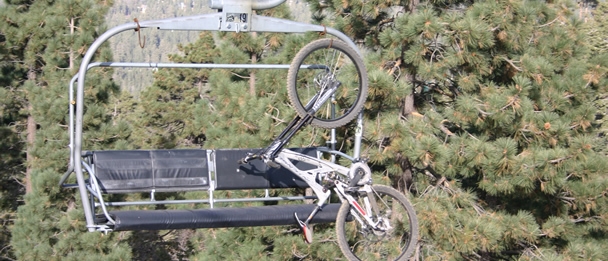A Bike Park by Any Other Name
18 Apr 2013
By David Scorer

What does it take for a bike park to be called a bike park? Seems an obvious question but is it so straight forward? After-all the bike park world is relatively new, and the industry will take some time to sort out standards and consistency. As a rider, you have certain expectations by what you understand of various terminology, so I’m guessing it’s no different for the term ‘bike park’. But will you always get what you’re expecting..?

There’s no doubt that there’s some variation on the theme. There’s the classic resort-based bike park; Whistler, Leogang, Les Gets etc... established on the back of the existing gondola and chairlift systems, and developed as the summer equivalent to the winter snow activities. But does that mean that a bike park has to have a chairlift? Bad Wildbad Bike Park in Germany has a little cog-railway train as the main uplift, although there is a small T-bar drag lift on the back side of the hill which is a nod to it’s skiing roots. And Revolution Bike Park in Wales runs uplifts with 4x4‘s and trailers.


Woodhill Bike Park in New Zealand has no uplift facility at all. In other parts of the world (the UK at least) this would be known as a Trail Center. Coed Llandegla, or Mabie, one of the 7-Stanes locations in Scotland are perfect examples - a network of purpose built bike trail systems that didn’t develop around a ski resort as there wasn’t one there in the first place! Bike parks are popping up all over the place and there doesn’t have to be an existing gondola to get it all going.
Which takes us to the growing trend in urban and even indoor bike parks. Clearly you’re not going to get the ‘typical’ DH and freeride trails that you would associate and expect from a standard “gravity” bike park. Take the relatively new Valmont Bike Park in Colorado, which concentrates on flowing skills trails and jumps. No 800m drop from the top to the bottom of the hill there, but a brilliant bike park none the less.

And then there’s Rays Indoor Bike Park, which seems like a contradiction in terms! Two locations in Cleveland and Milwaukee provide serious purpose built bike trails all protected from the wind and the rain. You’d never suggest that it wasn’t a bike park, but you also agree that it doesn’t offer the same service as Whistler. These are not gravity bike parks but they are bike parks none the less. You’d have to be pretty daft to show up at Ray’s expecting to lap a classic DH trail. But could you forgive the uninformed for thinking that you have the same kind of ‘bike park’ in Ohio as you have in British Columbia, just based on a name? It doesn’t mean you can’t call yourself a bike park if you don’t have a chairlift. But would a different name be more suited for some?

So you can’t define a bike park based on whether you get a helping hand up the hill, as there are just to many different aspects to the riding people want, and that’s not just gravity fed trails. So can you define a bike park by any other parameter? How about cost - do you have to pay a fee to ride the trails? Some would argue that the access fee is what’s really important, as this goes towards the fundamentals like trail maintenance, signposts, bike patrols, emergency medical services etc, etc. But Tignes Bike Park in France is free - a classic “gravity” bike park with a chairlift system, trail crews, and typical DH and freeride trails. So cost doesn’t work either.
Maybe in the end a bike park can be any number of different things. But there is probably one constant - implicit in the term, but not necessarily expressed each time - that we would suggest a venue must have to warrant the bike park name. And that is dedicated and maintained trails for mountain bike use ONLY. And that’s it. It’s surely the trails that count the most. After that, there’s room for anything and everything else.

Comments